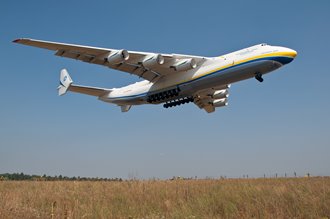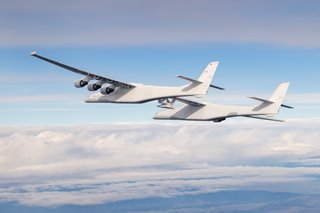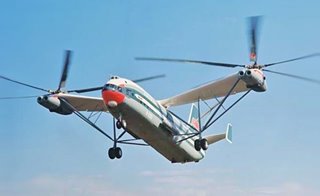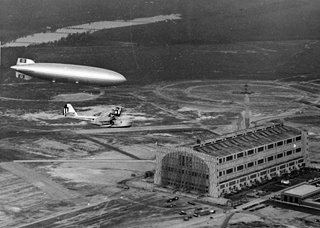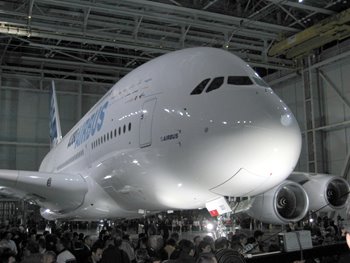5 of the Largest Aircraft to Ever Fly
5 of the Largest Aircraft to Ever Fly
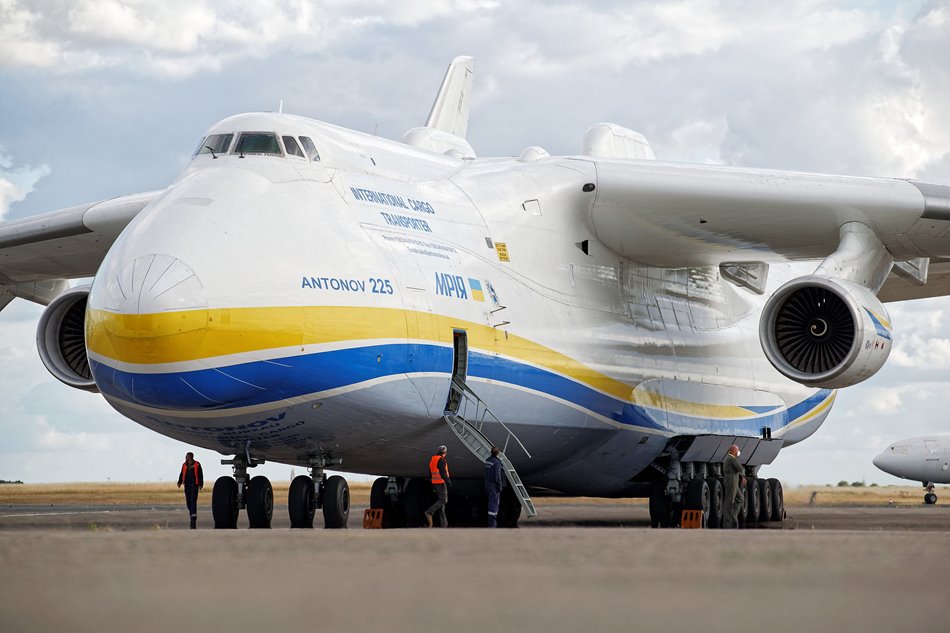

Human flight has been a marvel since the Wright Brothers, but these five aircraft would have been a wonder to see in the skies.
Recently, the Boeing 747 went out of production. That first jumbo jet is still a marvel to see on a tarmac or in the air. But compared to some airplanes and other flying machines, the 747 was more like a little brother. In fact, you could almost hide a 747 inside the largest ever aircraft by volume.
Building very large aircraft runs into challenges. The surface area of a wing or rotor scales less quickly than the volume of the aircraft, meaning the wings have to become unmanageably long as the plane gets larger. Larger aircraft need more powerful engines which require more fuel to operate. Operating such large craft creates its own problems.
Even so, aviation history has shown that, again and again, aircraft makers continue making very large vehicles. Here are some of the largest.
After the quick demise of the Soviet Buran program, the An-225 was mothballed for a time and then had a career in transporting specialty cargo. It was destroyed in its hangar outside of Kyiv during the first days of the Russian invasion of Ukraine.
While similar, smaller aircraft have launched space vehicles, the Stratolaunch has had a difficult development. The plane has had 13 test flights since 2019, but no rockets have yet been launched.
The helicopter exceeded design specifications and set a record for being able to lift more than 40 metric tons. But only two prototypes were built and shortly after an appearance at the 1971 Paris Air Show, Soviet authorities halted development.
The LZ 129 Hindenburg was built by the Zeppelin Company to serve as the flagship for a fleet of passenger-carrying airships to travel transoceanic routes. (The Hindenburg could cross the Atlantic in as little as 43 hours.) But to lift up to 70 passengers and 60 crew members, the airship needed to enclose an enormous volume of hydrogen. The sausage-shaped Hindenburg had a 135-foot diameter and was more than 800 feet long. As such, it was the largest aircraft to ever fly. It was known at the time that hydrogen was potentially dangerous and after only 14 months of service and 63 flights, catastrophe struck and the Hindenburg caught fire while attempting to land and was destroyed.
Nearly everything about the A380 was extra-large: It was 238 feet long and had a wingspan of 261 feet. Its 23 foot-diameter fuselage was large enough to hold two decks of seating its entire length. Unfortunately for Airbus, the business model the A380 was designed for—long-distance flights in a hub and spoke arrangement—fell out of fashion while the plane was under development and there were relatively few buyers for an enormous aircraft that cost $445 million each. After only 18 years of production, Airbus discontinued the A380 to concentrate on smaller models.
Jeffrey Winters is editor in chief of Mechanical Engineering magazine.
Building very large aircraft runs into challenges. The surface area of a wing or rotor scales less quickly than the volume of the aircraft, meaning the wings have to become unmanageably long as the plane gets larger. Larger aircraft need more powerful engines which require more fuel to operate. Operating such large craft creates its own problems.
Even so, aviation history has shown that, again and again, aircraft makers continue making very large vehicles. Here are some of the largest.
Antonov An-225 Mriya
In the 1980s, the Soviet Union developed a space-plane program to try to match the American Space Shuttle. Like the Space Shuttle, the Soviet Buran would land as an unpowered glider, which meant it needed to hitch a ride to return to the launch site. The Antonov An-225 Mriya was an airlift cargo aircraft designed to carry the Buran on its back. The plane was enormous—the cargo hold stretched 143 feet, longer than the first flight of the Wright Flyer, and it was powerful enough to airlift such heavy objects as railway engines. Its maximum weight at takeoff, 640 metric tons, is still a record.After the quick demise of the Soviet Buran program, the An-225 was mothballed for a time and then had a career in transporting specialty cargo. It was destroyed in its hangar outside of Kyiv during the first days of the Russian invasion of Ukraine.
Stratolaunch
The Stratolaunch was developed for the private space launch industry. The plan was ingenious: The plane would carry a rocket from the ground to an altitude of 35,000 feet, where the rocket would detach and ignite. The idea was that by giving the rocket a lift, it would be able to deliver heavier payloads into orbit. The Stratolaunch has a unique, twin-fuselage profile and wings that stretch a record 385 feet, longer than an American football field.While similar, smaller aircraft have launched space vehicles, the Stratolaunch has had a difficult development. The plane has had 13 test flights since 2019, but no rockets have yet been launched.
Mil V-12
The An-225 and Stratolaunch are both fixed-wing aircraft. The holder of the title of largest rotory-wing aircraft was commissioned by the Soviet military to provide up to 25 metric tons of cargo delivery to any point. To provide enough lift for what became the 105-metric ton Mil V-12, engineers at the Mil Design Bureau developed a helicopter with two 114-foot-diameter rotors powered by four engines that provided a total of 26,000 horsepower. With a size that had more in common with fixed-wing craft, the Mil V-12 could also carry nearly 200 passengers.The helicopter exceeded design specifications and set a record for being able to lift more than 40 metric tons. But only two prototypes were built and shortly after an appearance at the 1971 Paris Air Show, Soviet authorities halted development.
LZ 129 Hindenburg
In the early 20th century, airships were considered viable alternatives to heavier-than-air craft. For one thing, they were considered safer than airplanes that would crash if they lost power. But the largest-ever airship ironically became associated with disaster.The LZ 129 Hindenburg was built by the Zeppelin Company to serve as the flagship for a fleet of passenger-carrying airships to travel transoceanic routes. (The Hindenburg could cross the Atlantic in as little as 43 hours.) But to lift up to 70 passengers and 60 crew members, the airship needed to enclose an enormous volume of hydrogen. The sausage-shaped Hindenburg had a 135-foot diameter and was more than 800 feet long. As such, it was the largest aircraft to ever fly. It was known at the time that hydrogen was potentially dangerous and after only 14 months of service and 63 flights, catastrophe struck and the Hindenburg caught fire while attempting to land and was destroyed.
Airbus A380
The other aircraft on this list were prototypes or one-of-a-kind machines. The Airbus 380, on the other hand, was mass produced with more than 250 built. Intended to serve as the backbone for international airlines, the A380 was designed to carry as many as 850 passengers and fly as far as 9,200 miles without refueling. That led to an enormous maximum weight at takeoff, 575 metric tons or nearly 200 tons more than the Boeing 747.Nearly everything about the A380 was extra-large: It was 238 feet long and had a wingspan of 261 feet. Its 23 foot-diameter fuselage was large enough to hold two decks of seating its entire length. Unfortunately for Airbus, the business model the A380 was designed for—long-distance flights in a hub and spoke arrangement—fell out of fashion while the plane was under development and there were relatively few buyers for an enormous aircraft that cost $445 million each. After only 18 years of production, Airbus discontinued the A380 to concentrate on smaller models.
Jeffrey Winters is editor in chief of Mechanical Engineering magazine.


